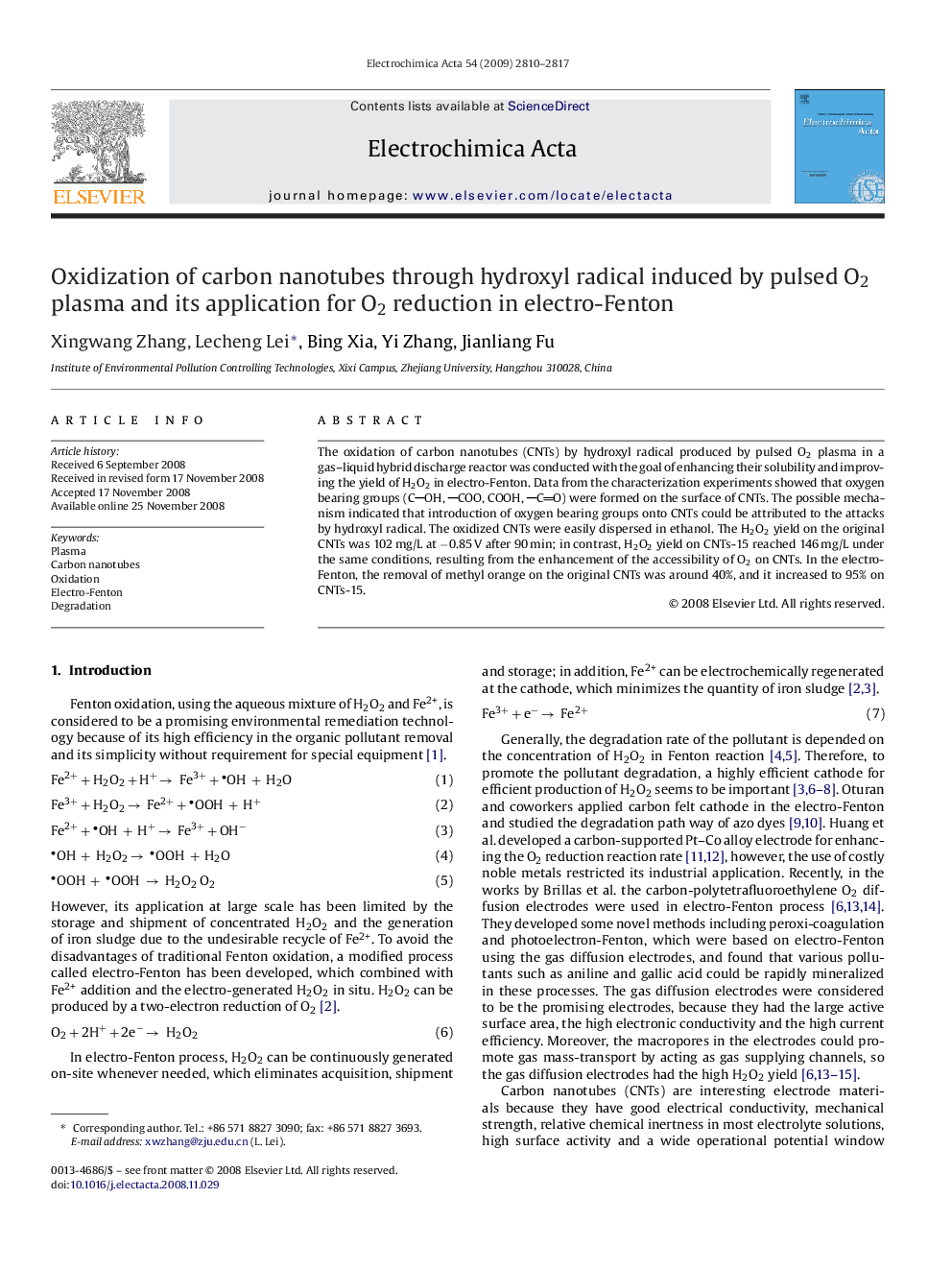| Article ID | Journal | Published Year | Pages | File Type |
|---|---|---|---|---|
| 192624 | Electrochimica Acta | 2009 | 8 Pages |
The oxidation of carbon nanotubes (CNTs) by hydroxyl radical produced by pulsed O2 plasma in a gas–liquid hybrid discharge reactor was conducted with the goal of enhancing their solubility and improving the yield of H2O2 in electro-Fenton. Data from the characterization experiments showed that oxygen bearing groups (COH, COO, COOH, CO) were formed on the surface of CNTs. The possible mechanism indicated that introduction of oxygen bearing groups onto CNTs could be attributed to the attacks by hydroxyl radical. The oxidized CNTs were easily dispersed in ethanol. The H2O2 yield on the original CNTs was 102 mg/L at −0.85 V after 90 min; in contrast, H2O2 yield on CNTs-15 reached 146 mg/L under the same conditions, resulting from the enhancement of the accessibility of O2 on CNTs. In the electro-Fenton, the removal of methyl orange on the original CNTs was around 40%, and it increased to 95% on CNTs-15.
